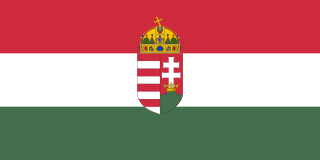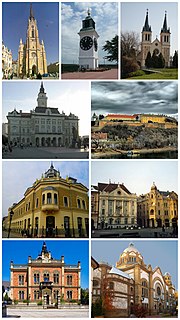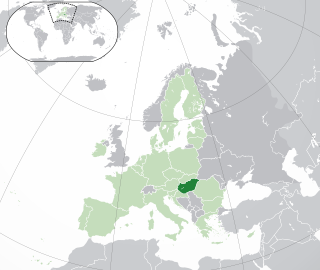This article does not cite any sources .(June 2019) (Learn how and when to remove this template message) |

This article discusses the administrative divisions of the Kingdom of Hungary between 1941 and 1944. As a result of the First (1938) and Second Vienna Award (1940), territories that had been ceded by the Kingdom of Hungary at the 1920 Treaty of Trianon were partly regained from Czechoslovakia and Romania respectively. This required modification of the administrative divisions.

An administrative division, unit, entity, area or region, also referred to as a subnational entity, constituent unit, or country subdivision, is a portion of a country or other region delineated for the purpose of administration. Administrative divisions are granted a certain degree of autonomy and are usually required to manage themselves through their own local governments. Countries are divided up into these smaller units to make managing their land and the affairs of their people easier. A country may be divided into provinces, which, in turn, may be divided in whole or in part into municipalities.

The Kingdom of Hungary, sometimes referred to as the Regency or the Horthy era, existed as a country from 1920 to 1946 under the rule of Regent Miklós Horthy. Horthy officially represented the Hungarian monarchy of Charles IV, Apostolic King of Hungary. Attempts by Charles IV to return to the throne were prevented by threats of war from neighbouring countries and by the lack of support from Horthy.

The First Vienna Award, or otherwise known as the First Vienna Diktat was a treaty signed on November 2, 1938, as a result of the First Vienna Arbitration. The Arbitration took place at Vienna's Belvedere Palace. The Arbitration and Award were direct consequences of the Munich Agreement the previous month and decided the partitioning of Czechoslovakia.
Hungary excluding Sub-Carpathia had three levels of administrative sub-division. Level One were: County (Vármegye, vm) and City with Municipal Status (Törvényhatósági Jogú Város, tjv). Counties were divided into Districts (Járás, j) and Urban Districts Megyei Város, mv) which constituted the second level. A third level were Sub-Districts, which were temporary entities typically created to give a position to a politician when no district leader posts were available.
The City of Budapest had the unique status of Royal Seat and Capital (székesfőváros, szfv.) and was legally distinct from the other Counties and Cities.
The Governorate of Subcarpathia (Kárpátalja) was a special case. It was given the status of Regent's Commissariat (Kormányzói Biztosság) with the intention that it would be governed by the Ruthenian minority population. It was divided into Administrative Delegations (Közigazgatási Kirendeltség), which were analogous to Counties. In practice, due to wartime restrictions, Sub-Carpathia was administered by officials appointed by the central government.
Rusyns, sometimes referred to as Rusnaks, also known as Carpatho-Ruthenians or Carpatho-Russians, are an East Slavic people who speak the Rusyn language. They descend from an East Slavic population that inhabited the Northern regions of the Eastern Carpathians since the Early Middle Ages. Together with other East Slavs from neighboring regions, they were often labeled by the common exonym Ruthenians, or by the regionally more specific designation Carpathian Ruthenians, and sub-group designations Dolinyans, Boykos, Hutsuls and Lemkos. Unlike their Eastern neighbors, who adopted the use of the ethnonym Ukrainians in the early 20th century, Rusyns kept and preserved their original name. As residents of Northeastern regions of the Carpathian Mountains, Rusyns are closely connected to, and also sometimes associated with, other Slavic communities in the region, like the Slovaks highlander community of Gorals.
After the Treaty of Trianon and loss of territory, seven merged counties had been created to administer the areas where parts of counties were lost. With the First and Second Vienna Awards, several of these were de-merged and new ones created as additional territories were added, ending up with four merged counties. Continuing with the practice adopted after the Treaty of Trianon, Merged Counties were designed közigazgatásilag egyelőre egyesített (kee) which indicated that the merger was considered temporary and that the possibility of the restoration of the pre-Trianon border was possible.

The Second Vienna Award, also known as the Second Vienna Diktat was the second of two territorial disputes arbitrated by Nazi Germany and Fascist Italy. Rendered on 30 August 1940, it assigned the territory of Northern Transylvania from Romania to Hungary..










